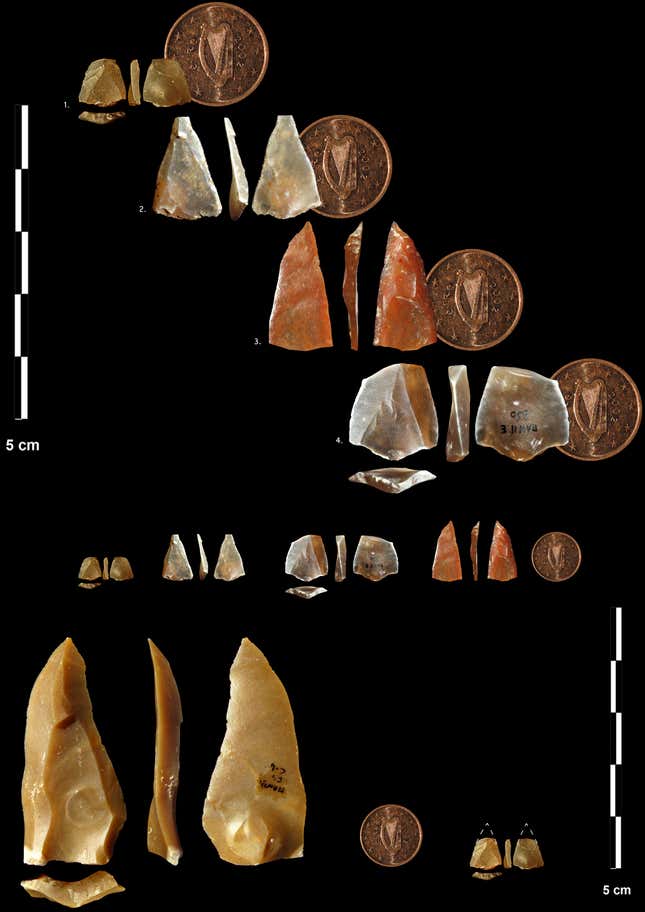
Hundreds of stone artifacts and 54,000-year-old human teeth have been found in a rock shelter in the south of France, pushing back evidence for Homo sapiens wielding the bow and arrow in Europe by 10,000 years.
The shelter—Grotte Mandrin, near the Rhône River valley—has yielded 852 artifacts, including cut stone points, blades, and flakes, which indicate to researchers that projectile weapons were being used by ancient humans there. The team’s study is published today in Science Advances, and it builds on a paper published last year that established the ancient human presence based on 54,000-year-old teeth.
“First, we have provided the earliest evidence for the arrival of the first Homo sapiens in Europe, 10 to 12 millennia earlier than previously known,” said Laure Metz, an archaeologist at Aix-Marseille Universite and University of Connecticut, in an email to Gizmodo. Metz is a co-author of both of the recent research papers.
“Then, with the functional analyses of lithic elements, these first modern humans mastered archery perfectly, pushing back the origin of these remarkable technologies in Eurasia by some 40,000 years,” Metz added.
The rock shelter contained sharp worked stones of varying shapes and sizes. The size of the points, and the ways in which they were cut, helped the researchers conclude their potential uses.
Larger points may have been hafted onto the ends of spears, for example, while the smaller points (called “micropoints” in the research) fell in line with bow-and-arrow technologies, according to the team’s analysis. No evidence of a bow was found at the site, however.

“Archery technologies are essentially based on the use of perishable materials; wood, fibers, leather, resins, and sinew, which are rarely preserved in European Paleolithic sites and make archaeological recognition of these technologies difficult,” Metz said.
The team also notes that these migrations of Homo sapiens into areas inhabited by Neanderthals may be connected to the invention of the bow and arrow. The researchers noted that Neanderthals likely kept using massive spears, which required closer contact with game than bows and arrows do.
Neanderthals disappeared from the fossil record about 40,000 years ago. Humans did not hunt Neanderthals to extinction; in fact, humans and Neanderthals (our nearest relatives) mated enough that Neanderthal DNA persists in our genome, and it’s likely that humans simply subsumed Neanderthals into our own species.
More analysis of known sites—and, of course, discovering new ones—could help us better understand interactions between Neanderthals and Homo sapiens, as the former began to disappear and the latter steadily took over the globe.
More: Skull From Czech Cave May Contain Oldest Modern Human Genome

